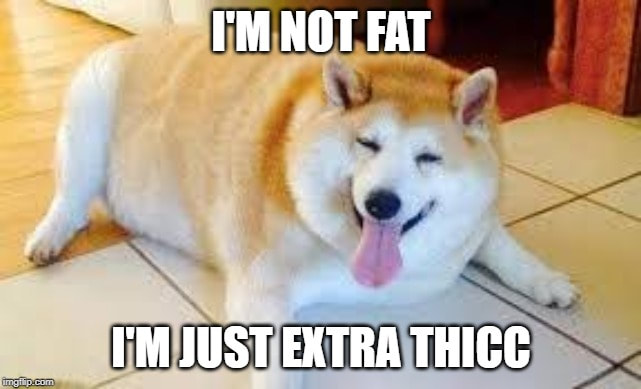|
Welcome to the second and last part of our weight management blog. Did you miss part 1? You can read it here.
To summarise, in part 1, we discussed that maintaining a healthy weight is essential for the sporting and pet dog. An overweight dog is at an increased risk of injury with additional stress on their joints, muscles, tendons and ligaments. As promised, today we will provide you with some tried and tested tips on how to help your dog lose weight healthily and sustainably.
2 Comments
What do you think when you see this meme? It's ok if your immediate reaction is to chuckle, but the reality is that the rise in pet obesity is staggering and alarming; it is estimated that over 45 percent of dogs in Canada are overweight.
What do I mean when I ask if your dog is wearing a tank top or a parka? Think about it for a second, when you wear a tank top on a warm summer day, you look and feel lighter. But on the other hand, wearing a warm, thick parka in the winter makes you look and feel heavier due to that extra thick layer. So, in the context of our dogs, are they at an ideal weight (tank top)? Or are they carrying extra pounds (parka)? This blog is part one of a two-part series with facts and research about obesity in pets and, more importantly, what we can do to prevent and treat it. Whether your dog is a sport dog, an active dog, or a couch potato, extra weight is not suitable for them. Attending various agility events and seeing overweight dogs competing in a physically demanding sport is hard for me, so I wanted to write this blog series. Discussing weight management can be a touchy subject, but it's time that we normalize this conversation and not let it slip through the cracks. Have you reassessed your fitness and training goals recently? The New Year is the perfect time to take a look at your goals and make changes for the year to come. Your fitness, training or even life goals you had in 2021 might not be the same goals you have for 2022!! Things change!
Now why should we even goal set in the first place? To put it simply, setting goals helps us to build motivation, stay on track, and make us accountable! Finding ways to build motivation can be difficult, especially when life throws us a curve ball (can you say global pandemic!?!) Learning how to alter your mindset and how that can influence your goals and your success level is key! In this week’s blog we’ll take a look at how to best set ourselves up for success and make our training goals achievable in the New Year. |
AuthorCarolyn McIntyre Archives
June 2024
Categories
All
|




 RSS Feed
RSS Feed